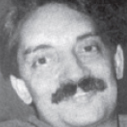I saw the film, Gorillas in the Mist, starring Sigourney Weaver, in the late 1980s. I had learned of Dian Fossey’s work with gorillas much earlier, in the late 1970s, and found myself instantly inspired by this incredible woman.
In September 1963, she borrowed the astronomical sum of $8,000 and blew it up on a seven-week trip to Africa where she met the legendary William Holden, owner of the celebrated lodge, Tree Tops. Virtually in heaven, she visited Kenya, Tanzania, the Congo and Zimbabwe in quick order. That was it. She decided that life was in Africa and her interactions with anthropologists Louis and Mary Leakey in Tanzania, who spoke to her of the work of primatologist Jane Goodall, was all the cementing that her life-changing decision required.
Fortuitously, Dian met Joan and Alan Root, two of the world’s finest wildlife cinematographers who encouraged her to set up camp behind their own facility. This is where wild mountain gorillas entered her life. And they never left. She made for the ‘dark’ continent where she lived out the rest of her life until she was murdered by the gorilla poachers she had fought against for 18 long years.
To say Fossey’s work was path breaking would be an understatement. She managed to identify three distinct groups in her study area in Rwanda, but they were much more wary than the gorillas of Congo. When she found that she was unable to observe them from close up she began mimicking their actions and sounds to reassure them. When interviewed she said she used techniques picked up while she was working with autistic children to habituate the gorillas and help them to accept her as one of them.
She was also responsible for the arrest of uncounted gorilla poachers who probably hated her as much as she hated them. She had many other enemies too , including some aggressive tourism promoters who never took kindly to her refusal to let them bring in more people than she thought were safe for the gorillas, who she feared might catch human diseases like the common cold.
Her unpopularity grew with every passing day as she got caught in a pincer between park officials who were not tough enough on poachers and tourism operators who felt that Fossey was in the way of their expanding businesses. Things came to a head when zoos overseas began teaming up with traders who pointed to the ‘surplus’ gorillas and complained that Fossey was preventing them from capturing infants.
Fighting like a mother might for her children, Dian went to great lengths to explain how infant gorillas were actually caught… by killing off the many adults that sprang to their rescue! Her staff would patrol the forest and they destroyed as many as 987 poachers’ traps in the extended vicinity of her camp alone. Ignoring the rising and very open threats to her life, she helped put large numbers of poachers behind bars. Something snapped in her when on January 1, 1977, one of her much-loved gorillas, Digit, was slaughtered by poachers. They decapitated him and cut off his hands to sell as ashtrays (for US $20 each).
Eventually one of the poachers was caught and he squealed on the other five. This is when she started the Digit Fund that is now called the Dian Fossey Gorilla Fund International, whose primary function is simply to fund antipoaching patrols.
Then, suddenly, on the morning of December 27, 1985, Dian Fossey was found dead in her cabin in the Virunga Mountains of Rwanda. She had literally been clubbed to death and then hacked by a machete. Nothing was missing. It was not a robbery. It was an assassination. The last entry in her diary read: “When you realise the value of all life, you dwell less on what is past and concentrate more on the preservation of the future.”

